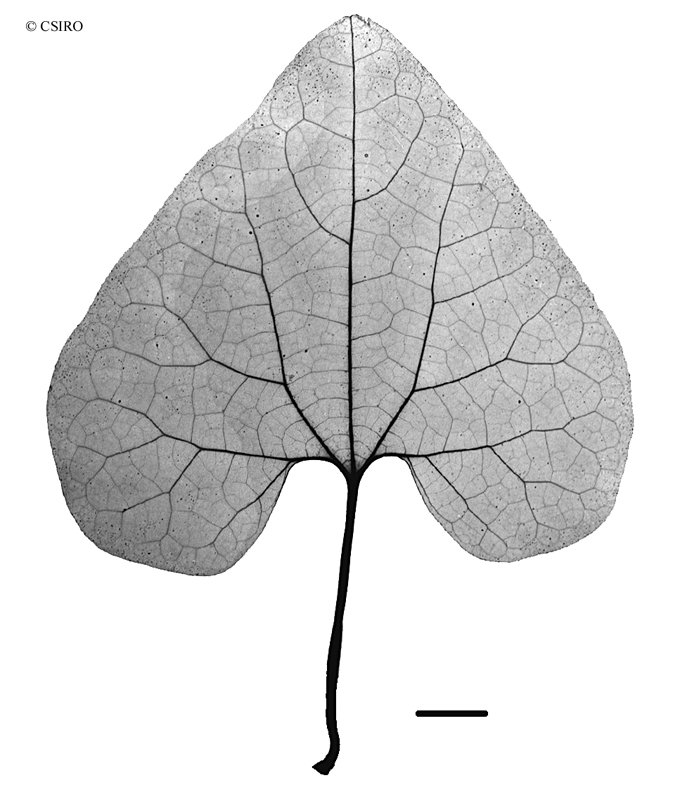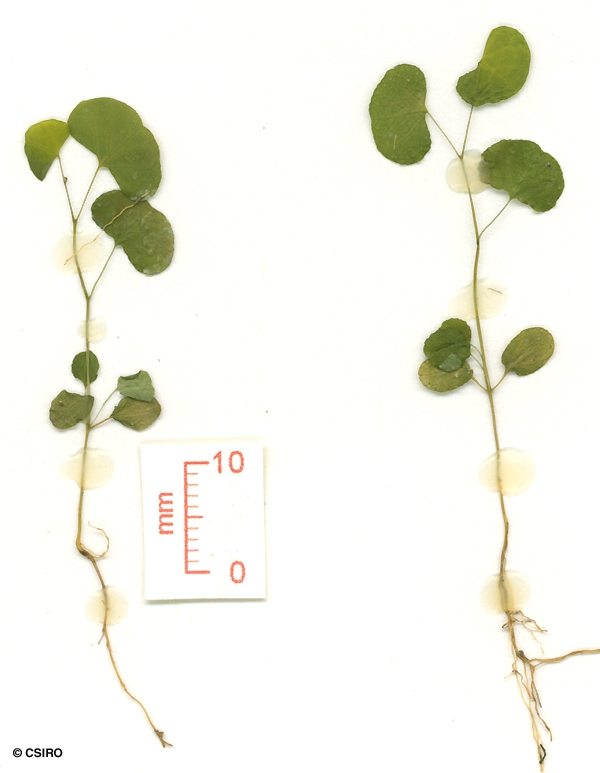Australian Tropical Rainforest Plants - Online edition
Aristolochia elegans Mast.






Masters, M.T. (1885) Gard. Chron. 24: 301. Type: Brazil, Rio de Janeiro, Glaziou 13163, Holo: K. Iso: P. Fide F. Gonzalez (!994), Fl. Ecuador 58: 22.
Dutchman's Pipe; Calico-Flower
Vine stem diameters to 3 cm recorded. Outer (dead) bark dark brown showing definite layers in transverse section. Blaze odour rather unpleasant.
Leaf blades about 2-10 x 2.7-12 cm, petioles about 1.2-5.8 cm long. Leaf blades much paler, almost white, on the underside compared with the upper surface. Usually 3-5 veins, including the midrib, radiating from the base of the leaf blade. Leaves emit an unpleasant odour when crushed. Large leaf-like growths up to 20 x 25 mm may be produced in the leaf axils.
Flowers pendulous. Perianth +/- U-shaped. The basal section of the perianth tube about 35 mm long which then narrows into a tube about 22-23 mm long which then expands into a large garishly coloured lobe about 65 mm diam. Stamens 6, fused together to form a structure about 6 x 5 mm around the style. Anthers sessile. Ovary 6-locular. Ovules numerous in each locule.
Fruits pendulous on fine threads about 5.5-6.5 cm long, each fruit about 5-6 x 1.5 cm at maturity before dehiscing to release the seeds. Pedicel about 5 cm long. Style about 7-8 mm long, persistent at the apex. Fruits opening from the base into 6 boat-shaped valves each containing many seeds. Pedicel splitting longitudinally into 6 strong thread-like cables. Seeds numerous, arranged transversely in each locule like biscuits in a cylindrical packet. Seeds flattened, cordate, about 5-6 x 4-5 mm, narrowly winged all around, the wing less than 1 mm wide. Embryo about 0.4-0.5 mm long, cotyledons about as wide as the radicle.
Cotyledons about 3.5-5 x 3-4 mm, elliptic to ovate, petiole about 2 mm long. First leaves reniform to orbicular with an emarginate apex, 3-veined at the base, produced only slightly above the cotyledons so that they all appear to be in one whorl. At the tenth leaf stage: leaf blade sagittate or reniform, 3-veined at the base, apex obtuse or bluntly pointed, often mucronate, base auriculate, about as wide as long. Midrib flush with the upper surface. Lower surface of the leaf blade very pale grey-green, densely clothed in very short hairs barely visible with a lens. Crushed leaves emit an unpleasant odour. Stems +/- twining. Seed germination time 25 to 31 days.
This species has caused concern in entomological circles. A. elegans is quite attractive to gravid female Birdwing Butterflies in New South Wales and Queensland who mistake it for native species of Aristolochia. However, the larval stages are poisoned by A. elegans and do not survive.
This species has been used medicinally. However, it contains dangerous alkaloids and its use is fraught with danger.
Aristolochia manshuriensis has recently been suspected of causing renal failure. The active ingredient suspected of causing the problem is aristolochic acid. Kew Scientist 16:5 (1999).





